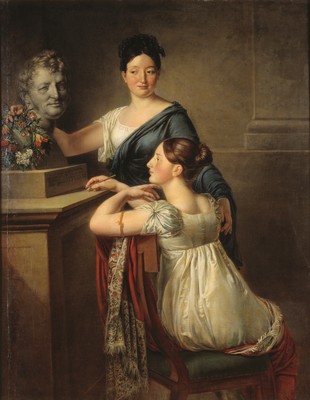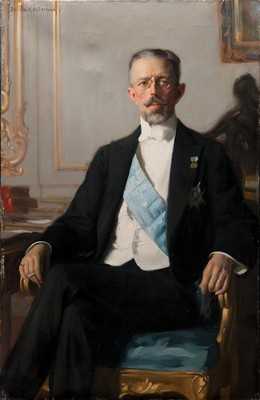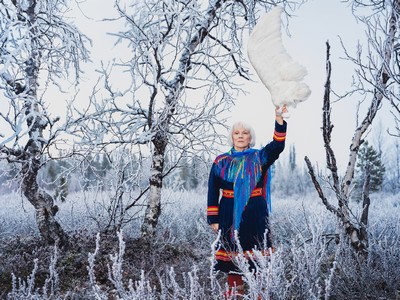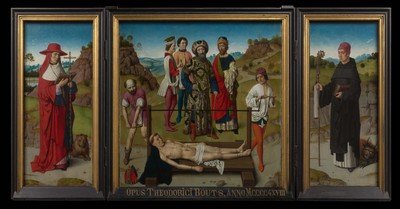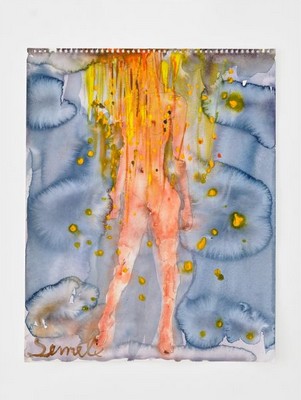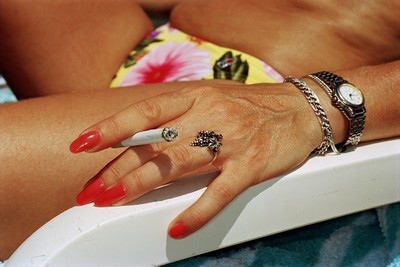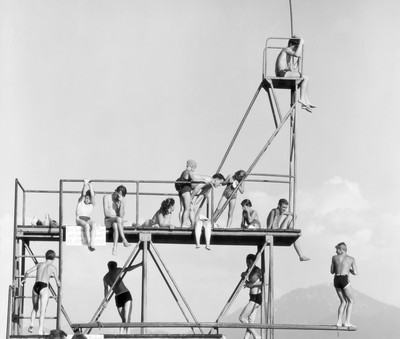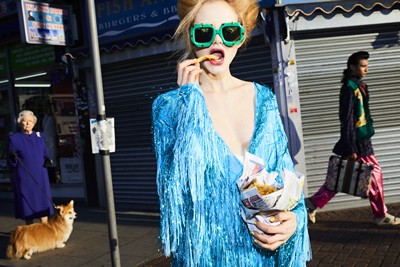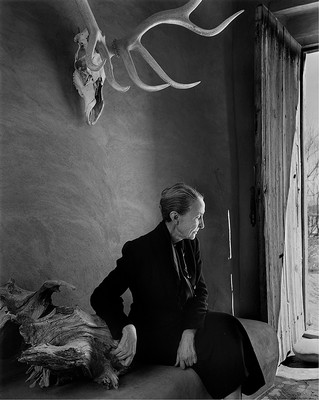Just like in a mirror – portraits over five centuries
Nationalmuseum Jamtli, Östersund
Through 9 March 2025
Self-portrait with allegories, 17th-century
Photo: Anna Danielsson/Nationalmuseum
Birgit Nilsson (1918-2005), opera singer, 1964
Oil on masonite
Photo: Linn Ahlgren/Nationalmuseum
The Demoiselles Charlotte Jeanette and Anne Sofie Laurent, 1815
Oil on canvas
Photo: Erik Cornelius/Nationalmuseum
The exhibition Just like in a mirror – portraits over five centuries presents men, women and children who lived in or served Sweden from the 16th century to the present day. Not all the subjects were born in the country, but they all contributed in various ways to its history or cultural life. Some of the artists and subjects have a connection with Jämtland.
Duskily as in a mirror, people from past centuries and from our own times can be discerned in the portraits. The paintings, sculptures and photographs are not realistic depictions, but rather images of how the subject wishes to appear for eternity and how the artist chooses to interpret this. The artworks show different ideals of appearance and fashion, while also reflecting how notions of status, social identity and profession have changed over the centuries.
In 17th-century Sweden, the court painter David Klöcker Ehrenstrahl produced an allegorical portrait of himself in the company of symbolic figures personifying painting and creativity. In the 19th century, the idea of the unworldly bohemian emerged as an artistic ideal, represented here by Louise Breslau’s informal study of her fellow artist Ernst Josephson. Others, such as Ava Lagercrantz at the turn of the 20th century, emphasised their social status by posing in lavish clothes and elegant settings. In the present day, Marja Helander’s photograph of Britta Marakatt-Labba portrays the Sami artist outdoors amid the snow-covered landscape of northern Sweden.
To this day, official portraits of the Swedish royal family, especially those of reigning monarchs, follow the portrait traditions of the Renaissance. The subjects represent not only themselves, but also their office and the kingdom. A full-length standing portrait of Queen Kristina as a child shows her holding regalia and wearing a dress of the same cut as those worn by adult women of the time. The emergence of the middle class in the 19th century was reflected in the style of royal portraits. Bernhard Österman’s 1929 painting of King Gustav V, with its brilliant use of light and colour, is akin to the artist’s portraits of other well-to-do personages. In our time, Thron Ullberg and others have taken photographs of the present King both in formal stately poses and sitting in the forest.
Gustav V (1858-1950), King of Sweden
Oil on canvas
Photo: Per-Åke Persson/Nationalmuseum
Britta Marakatt (born 1951), PhD h.c.,
Sámi textile artist, graphic artist, painter, married
to reindeer owner Nils Johannes Labba, 2022.
Photograph, digital print
Pierre Louis Alexandre, called "Petterson", ca. 1880
Oil on canvas
Photo: Anna Danielsson/Nationalmuseum
Scholars and creative practitioners – writers, actors, singers – are well represented in portraiture. In the past, they were often portrayed with an appropriate attribute such as a book or a sheet of music. Nowadays, photographic portraits in particular tend to rely more on the subject being recognisable to viewers, as in Sanna Sjöswärd’s portrayal of the author Theodor Kallifatides. Other artists have moved away from more realistic depictions. Laila Prytz created her image of Birgit Nilsson from blocks of colour, nevertheless succeeding in capturing characteristic features of the opera singer’s appearance.
Groups less well represented in Nationalmuseum’s collections, especially among the older portraits, include the peasantry, servants and sports stars. Examples featured here include an 18th-century servant girl, painted by an unknown artist, and Johan Fredrik Höckert’s portrait of Såsser Kerstin Andersdotter. The Afro-Swedish dockworker Pierre Louis Alexandre had a side job as a model at the Royal Swedish Academy of Fine Arts, where student Ida von Schulzenheim painted his portrait.
Just like in a mirror features around 100 portraits from the Nationalmuseum collections, including the Swedish National Portrait Gallery. Although painted works predominate, photography and sculpture are also represented. The portraits are not displayed in chronological order, but instead are grouped into themes such as family, cultural personalities and royalty. The exhibition not only focuses on portraiture as a major genre in art, but also presents a representative selection of works from Nationalmuseum’s collections, many of which have not been exhibited publicly for many years, if ever.
Exhibition curator: Eva-Lena Karlsson from Nationalmuseum
NATIONALMUSEUM JAMTLI
Museiplan 2, 831 52 Östersund, Sweden



